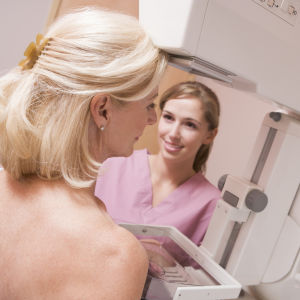The American Cancer Society (ACS) has finally done what no other American medical professional society dealing with breast cancer has been willing to do — examine the available evidence and recommend that mammogram screening start later and be performed less frequently. The response from politicians, the media and some physicians was swift, predictable and misguided.
For years the U.S., in accordance with recommendations from the ACS and other medical societies, has been the only country to recommend annual mammography screening for breast cancer starting at age 40 — other countries start mammography at 50 and then test every two to three years up to ages between 70 and 74. The U.S. Preventive Services Task Force (USPSTF), a respected, independent panel of primary care and preventive medicine experts, reviewed the risks and benefits of mammography in 2009 and again in 2015. Both times it advised that mammography no longer be routinely recommended for average risk women in the 40-49 year old age group because the risks outweigh the benefits. Instead, the USPSTF recommended that women between 50 and 74 have mammograms every other year rather than annually. Both times the suggestion was immediately condemned by medical groups, patient groups and politicians from both parties. In April Democratic Representative Debbie Wasserman Schultz claimed in the Washington Post that deferring mammograms until 50 would result in “needless deaths.” She, along with Republican Representative Renee Ellmers, sponsored the Protecting Access to Lifesaving Screenings Act (PALS Act, H.R. 3339) which places a two-year moratorium on implementing the USPSTF recommendations.
Advocates emphasize the benefits of screening. But deciding when to start the tests and how often to screen are important to limit the potential harms from screening. Over a ten-year period, women who are screened annually have a 61.3% probability of having at least one false positive result. False positives are more common in younger women and the number of false positives rises with the number of screens performed. Each false positive leads to additional x-rays, anxiety and, for 10-20% of false positives, an unnecessary biopsy. Biennial screening reduces the probability of a false positive by a third. Starting later reduces the lifetime number of mammograms. Screening also risks overdiagnosis — finding an early cancer that would never cause symptoms or threaten the woman’s life. The best estimates of mammography overdiagnosis range between 19-31%. Each overdiagnosed cancer is treated with a combination of surgery, radiotherapy and toxic chemotherapy, forcing women to bear the physical and emotional scars of unnecessary treatment.
The costs are not only physical and psychological. A recent study in Health Affairs found that overdiagnosis and false positives in women 40-59 years old cost $4 billion — i.e., half of the annual mammography screening expenditure.
After a two-year evidence review, the ACS split the difference between current and USPSTF recommendations. It changed its longstanding advice to start annual mammograms at 40 and recommended starting annual screening at 45, switching to biennial screening for women between 55 and 70 and continuing biennial mammograms for women over 70 who remain in good health. The ACS selected 45 to start because the risks of cancer and benefits of screening among women aged 45-49 years are more like women aged 50-54 than like women aged 40-44. The ACS acknowledged that screening before 50, and doing it annually, subjects women to an increased risk of false positives, but considered these risks less important than the USPSTF did. While the American Cancer Society conceded that overdiagnosis exists, unlike the U.S. Preventive Services Task Force, it would not factor it in when making recommendations. The ACS felt it was impossible “to determine if the lifetime risk of overdiagnosis was increased by beginning screening earlier.” The selection of screening intervals by ACS also had the whiff of compromise: it found that frequent exams are more effective in younger women, but recommended annual screening up through age 54 — despite citing studies showing no benefit of annual versus biennial exams over 50.
The response to the ACS announcement has been quick and tough. Medical colleagues have dissociated themselves from the ACS, claiming its recommendations will deprive women of the chance to have earlier diagnosis and less aggressive therapies. The American College of Obstetrics and Gynecology, the American College of Radiology, and the Society of Breast Imaging continue to recommend annual mammograms starting at 40. Representatives Wasserman Schultz and Ellmers, citing the different existing recommendations, reiterated their call to continue annual screening starting at 40. Citing the same recommendations, the New York Times editorialized, “it would be wiser to require insurers to continue covering all women starting at 40.”
None of these defenders of the status quo acknowledge the evidence cited by the USPSTF and ACS which supports the claim that screening is far more effective after 50, and that there is little benefit in having annual versus biennial exams after 50. They also understate the risks of false positives with the attendant follow up biopsies and disregard the problem of overdiagnosis.
The new ACS guidelines are a step in the right direction. They acknowledge that early, frequent screening does not necessarily save lives and subjects many women to unnecessary treatment. The $4 billion expended annually on overdiagnosis and false positives would be better spent on treatment and on research to determine which detected cancers are truly dangerous and need treatment, and which can be left alone.

